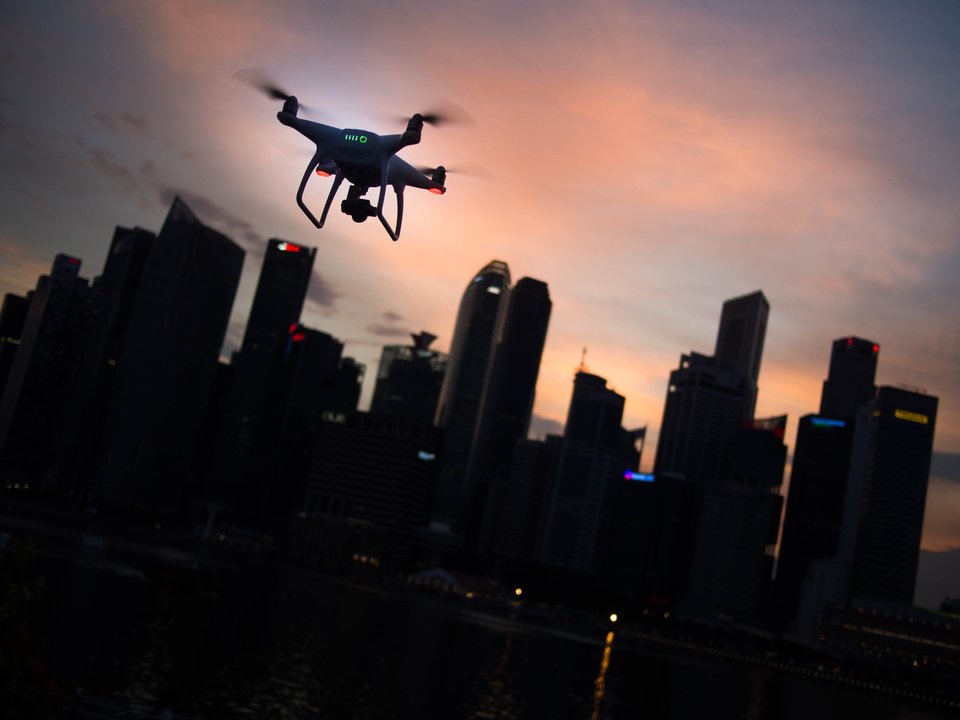Air Traffic
What is a drone corridor?
Drone corridors are still in their infancy, but many predict they will spur the next industrial and commercial revolution. Viola Caon takes a closer look.
In mid-2022, the UK Government gave its approval for Project Skyway to go ahead with the creation of a 265km unmanned aerial vehicle (UAV) corridor – also known as a drone corridor.
Touted as the longest of its kind, once operational in 2024, Skyway will connect the airspaces above Reading, Oxford, Milton Keynes, Cambridge, Coventry and Rugby and will allow for the first time the use of beyond visual line of sight (BVLOS) drone operations.
Project Skyway is the culmination of the UK government’s Future Flight Challenge Fund, a £300m ($335.54m) programme in three phases that aims to use electric or hydrogen autonomous vehicles to transform how people connect, goods are delivered and services are provided.
Altitude Angel, telecoms company BT and other UK start-ups form the consortium that won the government’s mandate to build Skyway.
Looking at the numbers, it does seem that the use of drone corridors across sectors is destined to revolutionise the way the world interacts, especially when it comes to deliveries in the broadest of terms.
According to PwC’s recent Skies Without Limits v2.0 report, adopting UAVs could result in £22bn of net cost savings, a reduction in carbon emissions of 2.4 million tonnes and the creation of 650,000 jobs
Drone corridors: a definition
First things first, a drone is a UAV. It is a flying robot or mini-aircraft that is controlled remotely or flies autonomously with software-controlled flight plans embedded in its system that work in conjunction with sensors and a global positioning system.
A commercial drone corridor is a flight path designated for the safe and legal operation of drones. While not visible, it can be pictured as an actual corridor in the air with a ceiling, sides and a floor.
Drones are of different types and sizes – examples include multi-rotor drones, fixed-wing drones, single-rotor drones and fixed-wing hybrid VTOL (vertical take-off and landing) – and are used for a variety of purposes.

A licence is necessary to operate them, and they need to fly at a certain level above the ground, but should not fly higher than 120m so as to not interfere with commercial aircraft.
From 31 December 2020, the Permission for Commercial Operation replaced the rule that allowed the use of drones of up to 25kg for commercial purposes with a new qualification called the General Visual Line of Sight Certificate.
This qualification is based on the idea that drones should not fly out of the remote pilot’s sight. However, the projects so far promoted by the UK government are trying to change that in order to take the commercial use of drones and drone corridors to the next level.
Skyway and the next industrial revolution
That is where both Project Xcelerate first and now Skyway come into play. Both have as one of their main objectives overcoming the challenge of flying BVLOS drones.
Project Xcelerate kicked off in mid-2021 by running flight trials along an 8km-long corridor to tackle the BVLOS challenge and demonstrate that drones can operate safely in the same airspace as manned aviation.
The consortium ran a number of trials across sectors including healthcare, emergency services and infrastructure to show how drone deliveries and inspection can benefit businesses, the public sector and UK citizens.
“The key use cases that will be explored by the consortium include using drones to assist the emergency services; for example, during road traffic collisions and search and rescue missions,” said BT at the time.
"Using 3D mapping techniques, drones can be used for forensics purposes to aid the police when responding to road traffic collisions and can also help to locate missing persons during search and rescue missions."
The capability we are deploying and proving through Skyway can revolutionise the way we transport goods and travel.
The project also demonstrated that drone corridors can reduce the lead times for urgently needed medical deliveries, helping the healthcare and pharmaceutical sectors to improve standards of patient care.
Infrastructure emerged as another sector that could benefit from the use of drone corridors as they can be used to help assess damage or maintenance required for critical national infrastructure for the utilities, telecoms and transport sectors. The trials were a success, and in mid-2022, the UK government authorised the consortium to create the Skyway.
CEO and founder Richard Parker said at the time the project was unveiled: “The capability we are deploying and proving through Skyway can revolutionise the way we transport goods and travel in a way not experienced since the advent of the railways in the 19th century: the last transport revolution.”
Potential challenges for the UK’s drone corridor
Ambitions are high, but as is often the case with cutting-edge technology, potential challenges and doubts have already arisen.
As drones heavily depend on wi-fi and mobile connection to work, one such concern is around connection malfunctions. Wi-fi coverage can be patchy in some areas and affected by dropouts due to people gathering in big crowds and overloading the grid.
Reliability on mobile networks is also likely to force drones – and drone corridors as a result – to fly at a relatively low altitude, potentially intruding into the public’s everyday life.
Regardless of the challenges and the potential glitches, however, the potential benefit that drone corridors could bring to such a wide variety of sectors and business functions is undeniable, and this ‘transport revolution’ is only likely to grow in popularity on a global scale in the coming years.